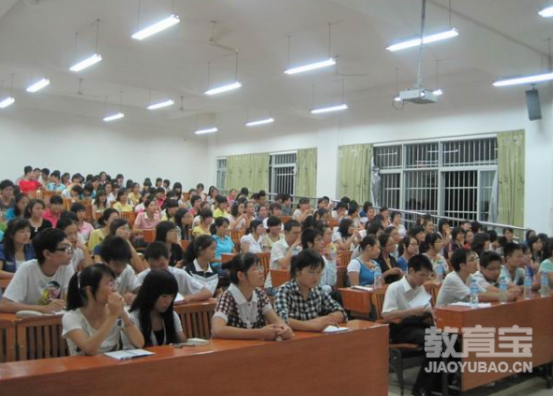 返回
教育头条
返回
教育头条

考研英语阅读备考题推荐
临近考试很多同学都开始了紧张有序的考研试题刷题和学习任务,如何能够更好地做好英语阅读呢?今天小编分享“2020考研英语阅读冲刺模拟及答案(2)”,希望能给备战2020考研考生提供帮助。
As Gilbert White,Darwin, and others observed long ago, all species appear to have the innate capacity to increase their numbers from generation to generation. The task for ecologists is to untangle the environmental and biological factors that hold this intrinsic capacity for population growth in check over the long run. The great variety of dynamic behaviors exhibited by different population makes .。this task more difficult: some populations remain roughly constant from year to year others exhibit regular cycles of abundance and scarcity still others vary wildly, with outbreaks and crashes that are in some cases plainly correlated with the weather, and in other cases not. To impose some order on this kaleidoscope of patterns, one school of thought proposes dividing populations into two groups. These ecologists posit that the relatively steady populations have density-dependent growth parameters that is, rates of birth, death, and migration which depend strongly on population density. The highly varying populations have density-independent growth parameters, with vital rates buffeted by environmental events these rates fluctuate in a way that is wholly independent of population density.
This dichotomy has its uses, but it can cause problems if taken too literally. For one thing, no population can be driven entirely by density-independent factors all the time. No matter how severely or unpredictably birth, death, and migration rates may be fluctuating around their long-term averages, if there were no density-dependent effects, the population would, in the long run, either increase or decrease without bound (barring a miracle by which gains and losses canceled exactly)。 Put another way, it may be that on average 99 percent of all deaths in a population arise from density-independent causes, and only one percent from factors varying with density. The factors making up the one percent may seem unimportant, and their cause may be correspondingly hard to determine. Yet, whether recognized or not, they will usually determine the long-term average population density.
In order to understand the nature of the ecologist''s investigation, we may think of the density-dependent effects on growth parameters as the signal ecologists are trying to isolate and interpret, one that tends to make the population increase from relatively low values or decrease from relatively high ones, while the density-independent effects act to produce noise in the population dynamics. For populations that remain relatively constant, or that oscillate around repeated cycles, the signal can be fairly easily characterized and its effects described, even though the causative biological mechanism may remain unknown. For irregularly fluctuating populations, we are likely to have too few observations to have any hope of extracting the signal from the overwhelming noise. But it now seems clear that all populations are regulated by a mixture of density-dependent and density-independent effects in varying proportions. .
The author of the text is primarily concerned with [A] discussing two categories of factors that control population growth and assessing their relative importance. [B] describing how growth rates in natural populations fluctuate over time and explaining why these changes occur. [C] proposing a hypothesis concerning population size and suggesting ways to test it. [D] posing a fundamental question about environmental factors in population growth and presenting some currently accepted answer. 2.It can be inferred from the text that the author considers the dichotomy discussed to be [A] applicable only to erratically fluctuating populations. [B] instrumental, but only if its limitations are recognized. [C] dangerously misleading in most circumstances. [D] a complete and sufficient way to account for observed phenomena. 3.According to the text, all of the following behaviors have been exhibited by different populations EXCEPT [A] roughly constant population levels from year to year.

[B] regular cycles of increases and decreases in numbers. [C] erratic increases in numbers correlated with the weather. [D] unchecked increases in numbers over many generations. 4.The discussion concerning population in the third paragraph serves primarily to [A] demonstrate the difficulties ecologists face in studying density-dependent factors limiting population growth. [B] advocate more rigorous study of density-dependent factors in population growth. [C] prove that the death rates of any population are never entirely density-independent. [D] underline the importance of even small density-dependent factors in regulating long-term population densities. 5. In the text, the author does all of the following EXCEPT [A] cite the views of other biologists. [B] define a basic problem that the text addresses. [C] present conceptual categories used by other biologists. [D] describe the results of a particular study.
As Gilbert White,Darwin, and others observed long ago, all species appear to have the innate capacity to increase their numbers from generation to generation. The task for ecologists is to untangle the environmental and biological factors that hold this intrinsic capacity for population growth in check over the long run. The great variety of dynamic behaviors exhibited by different population makes .。this task more difficult: some populations remain roughly constant from year to year others exhibit regular cycles of abundance and scarcity still others vary wildly, with outbreaks and crashes that are in some cases plainly correlated with the weather, and in other cases not. To impose some order on this kaleidoscope of patterns, one school of thought proposes dividing populations into two groups. These ecologists posit that the relatively steady populations have density-dependent growth parameters that is, rates of birth, death, and migration which depend strongly on population density. The highly varying populations have density-independent growth parameters, with vital rates buffeted by environmental events these rates fluctuate in a way that is wholly independent of population density.
This dichotomy has its uses, but it can cause problems if taken too literally. For one thing, no population can be driven entirely by density-independent factors all the time. No matter how severely or unpredictably birth, death, and migration rates may be fluctuating around their long-term averages, if there were no density-dependent effects, the population would, in the long run, either increase or decrease without bound (barring a miracle by which gains and losses canceled exactly)。 Put another way, it may be that on average 99 percent of all deaths in a population arise from density-independent causes, and only one percent from factors varying with density. The factors making up the one percent may seem unimportant, and their cause may be correspondingly hard to determine. Yet, whether recognized or not, they will usually determine the long-term average population density.
In order to understand the nature of the ecologist''s investigation, we may think of the density-dependent effects on growth parameters as the signal ecologists are trying to isolate and interpret, one that tends to make the population increase from relatively low values or decrease from relatively high ones, while the density-independent effects act to produce noise in the population dynamics. For populations that remain relatively constant, or that oscillate around repeated cycles, the signal can be fairly easily characterized and its effects described, even though the causative biological mechanism may remain unknown. For irregularly fluctuating populations, we are likely to have too few observations to have any hope of extracting the signal from the overwhelming noise. But it now seems clear that all populations are regulated by a mixture of density-dependent and density-independent effects in varying proportions. .
The author of the text is primarily concerned with [A] discussing two categories of factors that control population growth and assessing their relative importance. [B] describing how growth rates in natural populations fluctuate over time and explaining why these changes occur. [C] proposing a hypothesis concerning population size and suggesting ways to test it. [D] posing a fundamental question about environmental factors in population growth and presenting some currently accepted answer. 2.It can be inferred from the text that the author considers the dichotomy discussed to be [A] applicable only to erratically fluctuating populations. [B] instrumental, but only if its limitations are recognized. [C] dangerously misleading in most circumstances. [D] a complete and sufficient way to account for observed phenomena. 3.According to the text, all of the following behaviors have been exhibited by different populations EXCEPT [A] roughly constant population levels from year to year.

[B] regular cycles of increases and decreases in numbers. [C] erratic increases in numbers correlated with the weather. [D] unchecked increases in numbers over many generations. 4.The discussion concerning population in the third paragraph serves primarily to [A] demonstrate the difficulties ecologists face in studying density-dependent factors limiting population growth. [B] advocate more rigorous study of density-dependent factors in population growth. [C] prove that the death rates of any population are never entirely density-independent. [D] underline the importance of even small density-dependent factors in regulating long-term population densities. 5. In the text, the author does all of the following EXCEPT [A] cite the views of other biologists. [B] define a basic problem that the text addresses. [C] present conceptual categories used by other biologists. [D] describe the results of a particular study.
上述就是教育宝头条介绍的完整信息,想要查看更多的考研资讯,敬请关注我的微信18560125702,还可免费获取学习攻略哦!返回教育宝头条
【免责声明】本文仅代表作者本人观点,与教育宝无关。教育宝对文中陈述、观点判断保持中立,不对所包含内容的准确性、可靠性或完整性提供任何保证。请读者仅作参考,特此声明!





